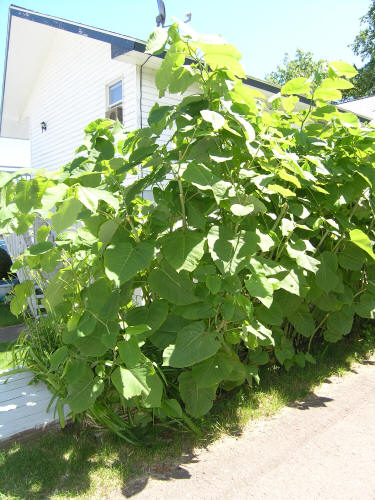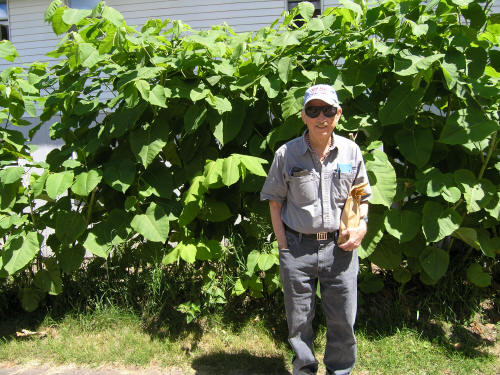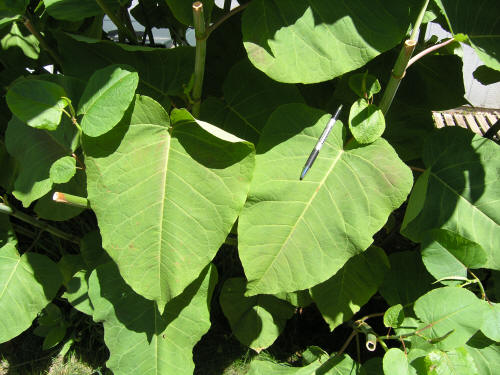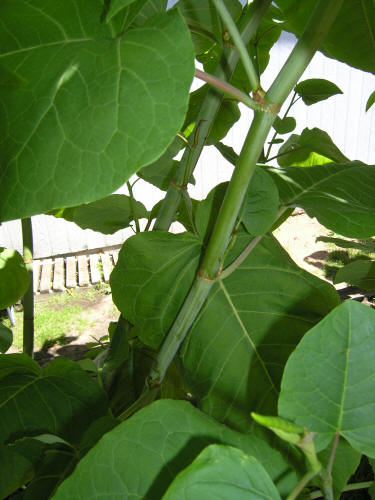Giant Knotweed
Giant Knotweed
Fallopia sachalinensis (F. Schmidt) Ronse Decraene
(formerly Polygonum sachalinensis F. Schmidt)
Polygonaceae (Smartweed Family)

▲ ▼ large plants in a hedgerow in northern Wisconsin

▲ ▼ large plants in a hedgerow in northern Wisconsin


▲ ▼ very large leaves (see ball point pen over leaf in upper photo for perspective)

▲ ▼ stems, showing that stems are hollow (below)


▲ new leaf emergence

▲ new stem growth has zig-zag pattern
Giant Knotweed:
- A creeping perennial knotweed (in the Smartweed Family--Polygonaceae) that reproduces by rhizomes & seeds
- Has large, heart-shaped leaves that can be up to 16 inches long and 10 inches wide (or larger) and can grow up to 15 feet tall
- Stems large diameter (bamboo-like), hollow and die back to ground each winter
- Flowers are tiny, whitish-pink in axillary panicles, showy
- Introduced as an ornamental plant, but has escaped cultivation--a newer weed
- Prefers moist, well-drained, fertile soils--often found on ditchbanks, pastures
- Prefers full sun but can tolerate moderate shade--so far mainly found in northern Midwestern states
- Appears similar to Japanese Knotweed (Fallopia cuspidata), with which it can hybridize, but has much larger leaves and mature size
Much thanks to Andrew Teal for his help in providing locations to photograph this weed in Wisconsin.